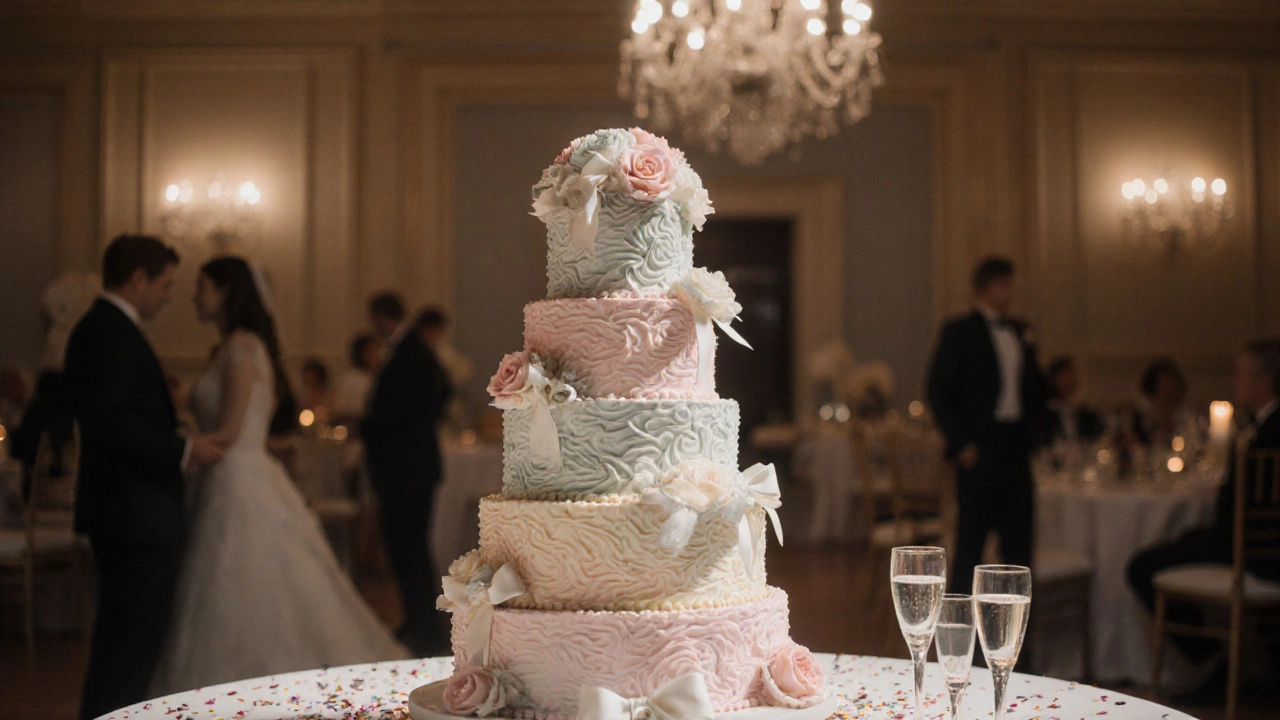Wedding Cake Storage: Keep Your Cake Fresh & Safe
When working with wedding cake storage, the practice of keeping a wedding cake safe and fresh after the celebration. Also known as cake preservation, it involves methods like refrigeration, freezer storage, and proper wrapping to maintain flavor and texture. You’ll also hear about refrigerated storage, a cooler‑room approach that keeps the cake at just‑right temperatures, and cake transportation, the tricky part of moving tiers without damage.
Why proper storage matters
Freshness isn’t just a buzzword – it’s a taste, texture, and safety issue. A cake left out at room temperature for hours can dry out, develop mold, or become a breeding ground for bacteria. That’s why wedding cake storage directly impacts the guest experience and the couple’s memory of their day. A well‑stored cake stays fluffy, retains icing shine, and remains safe to eat even weeks later for that anniversary slice.
Choosing the right method starts with understanding the cake’s components. Buttercream, fondant, whipped cream, and fresh fruit each react differently to temperature. Buttercream holds up well in a fridge, while whipped cream needs a colder environment to keep its airy structure. Fresh fruit adds moisture that can turn soggy if not kept cold. Knowing these details helps you pick between refrigeration and freezing, ensuring the cake’s integrity stays intact.
Freezer storage is the go‑to for long‑term preservation. Ideal for cakes that need to last beyond a few days, it halts microbial growth and locks in moisture. The key is to wrap the tiers tightly in plastic wrap, then add a layer of aluminum foil to guard against freezer burn. When you’re ready to serve, let the cake thaw slowly in the fridge for 12‑24 hours before bringing it to room temperature. This gradual thaw prevents cracks in the frosting.
Refrigerated storage works best for cakes you’ll eat within a week. Keep the tiers in airtight containers or cover them with a cake dome to avoid the fridge’s dry air seeping in. Set the temperature to around 4°C (39°F); anything colder could harden buttercream, anything warmer risks spoilage. If you have multiple tiers, store each on a separate platter with a piece of parchment between them to stop frosting from sticking.
Wrapping and container choice play a huge role, too. Food‑grade cling film is a must‑have; it creates a moisture barrier while still allowing the cake to breathe slightly. For extra protection, especially with delicate fondant designs, consider a cake box that fits snugly. Avoid cardboard alone – it can absorb moisture and cause the cake to wilt.
Timing is another factor. Ideally, order your cake no later than two weeks before the wedding if you plan to freeze. This gives the baker enough time to bake, decorate, and pre‑freeze the tiers properly. If you’re only refrigerating, aim for a 3‑day window between delivery and the big day. Remember, a cake’s shelf life varies: buttercream can last up to 5 days refrigerated, while whipped cream is safest for 2‑3 days.
Transporting the cake from the venue to home or a reception hall adds a layer of complexity. Use a sturdy, flat‑bottomed cake carrier and keep the cake level during travel. If the journey exceeds an hour, a portable cooler or insulated bag can maintain a safe temperature until you reach the final destination. Secure the carrier in the car so it doesn’t shift – a sudden jolt can crack tiers or smear frosting.
Now that you’ve got the basics of wedding cake storage covered – from freezer tricks to fridge hacks, wrapping tips, and transport tricks – you’re ready to explore the specific guides below. Each article dives deeper into one of these areas, giving you actionable steps to protect your cake and enjoy every slice for years to come.
Should You Eat Your Wedding Cake a Year Later? The Truth About Preservation
Learn if you can safely eat your wedding cake a year later, the best preservation methods, step‑by‑step freezing tips, and common pitfalls.
View More